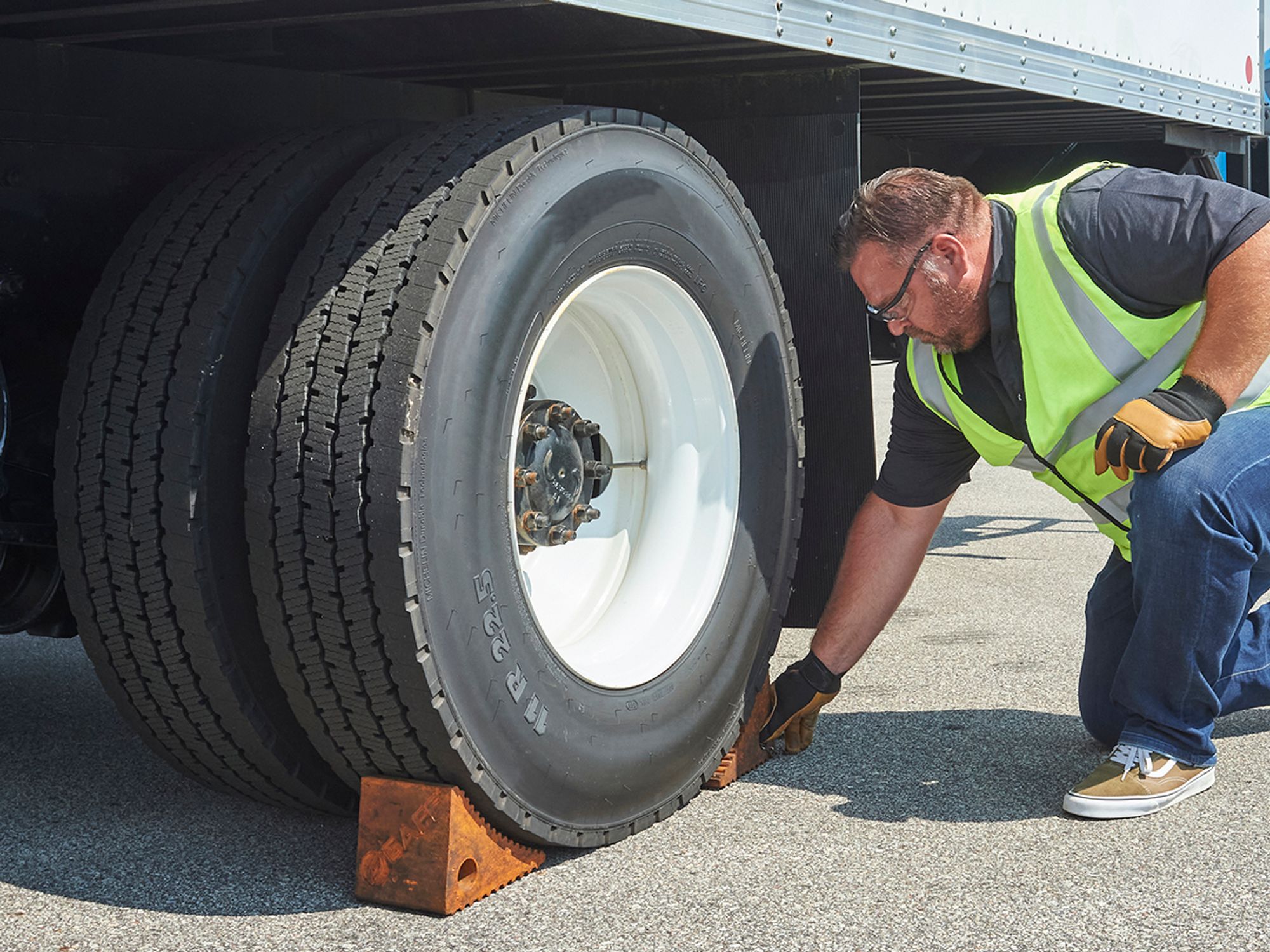Wheel chocks/sand shoes in construction

- OSHA may require wheel chocks or sand shoes to prevent transport vehicles from moving while a dockboard is in use, unless pre-empted by the DOT parking brake requirement.
The Occupational Safety and Health Administration (OSHA) regulation at 1910.26(d) requires measures, such as wheel chocks or sand shoes, to prevent the transport vehicle (e.g., a truck, semi-trailer, trailer, or rail car) on which a dockboard is placed from moving while employees are on the dockboard. There are some jurisdictional issues with the Department of Transportation (DOT)’s parking brake requirement which the DOT deems appropriate to prohibit movement of vehicles during all loading conditions.
The DOT regulates interstate transportation of commercial motor vehicles (CMVs) traveling on public roads which preempts OSHA enforcement. DOT regulations define a CMV, in part, as a self-propelled or towed vehicle used on the highways in interstate commerce, if the vehicle:
- Has a gross vehicle weight rating or gross vehicle weight of at least 10,001 pounds, whichever is greater; or
- Is used in transporting materials found by the Secretary of Transportation to be hazardous as defined by DOT regulations and transported in a quantity requiring placarding under DOT regulations.
DOT regulations do not apply to transport vehicles that do not meet the definition of CMV, do not operate in interstate transportation, or are not used on public roads. OSHA continues to have authority over:
- Transport vehicles that do not meet the definition of CMV; and
- CMVs not operated in interstate commerce, which includes CMVs that transport materials on private roads or within a work establishment.
OSHA will enforce chocking requirements in these situations that are not covered by FMCSA. OSHA believes 1910.26(d) is necessary because not all transport vehicles are CMVs or used on public roads. Employers use transport vehicles to move material and equipment within their facilities.
